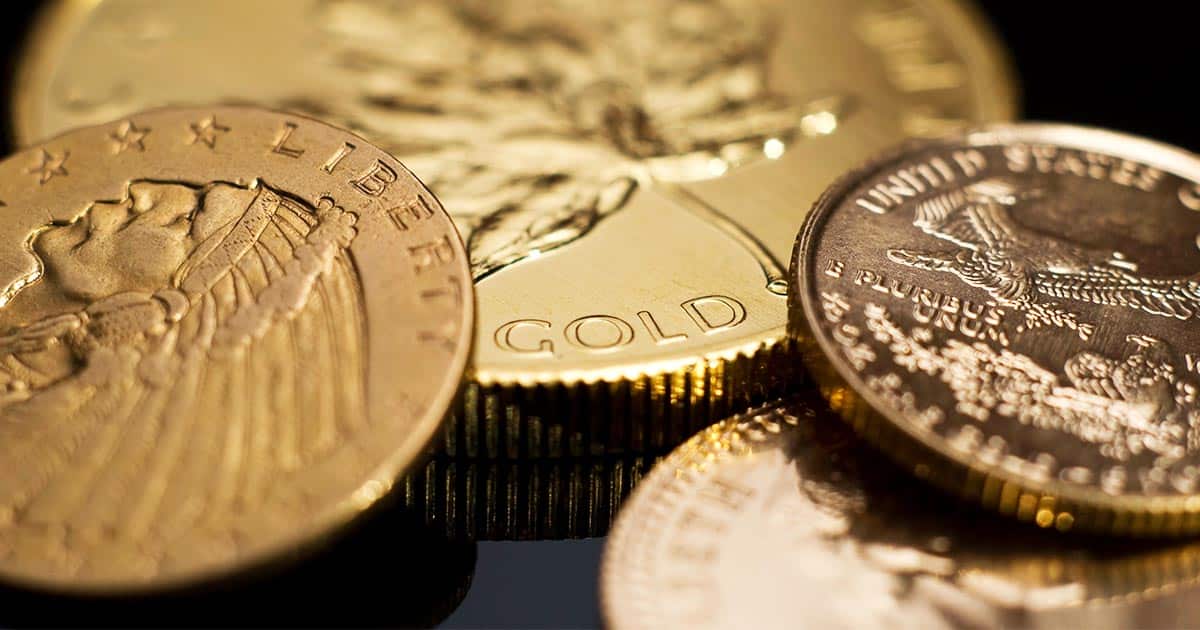
Investors seeking to diversify their portfolios often turn to gold coins for their intrinsic value and historical significance. However, determining the worth of a gold coin involves several factors beyond its gold content alone.
From the purity of gold content to the nuances of rarity and condition, we will explore the aspects that investors must consider when evaluating coin values.
Factors Affecting Gold Coin Value
Gold Content
The most significant factor in determining the value of a gold coin is its gold content. Gold coins are typically made of 22-karat or 24-karat gold, with purity levels ranging from 90% to 99.99%. The higher the purity, the greater the value of the coin.
Examples:
- 2024 Gold Canadian Maple Leaf: .9999 Fine
- 2024 Great Britain Gold Sovereign: .9167 Fine
Weight
Another crucial factor is the weight of the gold coin, usually measured in troy ounces. The weight directly impacts its intrinsic value, with heavier coins generally commanding higher prices. That is, if their gold content is comparable.
Examples:
- 2023 1 Ounce Gold Coronation Britannia
- 2023 5 Ounce Britannia
Rarity and Collectibility
Gold content, rarity, and collectibility significantly influence the value of gold coins. Limited mintages, historical significance, and unique designs can drive up prices among collectors, often surpassing the value of the gold itself.
Examples:
- 1904 Gold Lewis and Clark $1
- 2023 Royal Canadian Mint His Majesty King Charles III’s Royal Cypher
Condition
Like any collectible item, the condition of a gold coin plays a vital role in determining its worth. Coins in mint condition, with minimal wear and pristine surfaces, often command higher premiums compared to those showing signs of circulation or damage.
Examples:
- 1908 Indian Gold Half Eagle MS-63 NGC $5
- 1967 South Africa 1 oz Gold Krugerrand MS-65 NGC
Numismatic Premium
One of the defining features of gold coin valuation is the numismatic premium. This premium represents the additional value attributed to a coin beyond its intrinsic gold content. Various factors, including rarity, historical significance, and aesthetic appeal influence numismatic premiums.
Coins with limited mintages, unique designs, or ties to significant historical events often command higher numismatic premiums. Collectors are willing to pay premiums for these coins due to their scarcity and collectibility, making them prized additions to numismatic collections.
Investors should carefully assess the numismatic premium when considering gold coin purchases, especially if their primary focus is on the gold content as an investment vehicle. While numismatic premiums can enhance a coin’s value, investors should balance these premiums with liquidity considerations and market demand to make informed investment decisions.
Determining Value
When assessing the worth of a gold coin, investors should consider its gold content, weight, rarity, condition, and any associated numismatic premiums.
This can be done through:
- Research: Utilize reputable sources, such as numismatic guides and market reports, to evaluate the coin’s specifications and historical performance.
- Consultation: Seek guidance from numismatic experts or reputable dealers who can provide insights into the coin’s value and market trends.
- Market Analysis: Monitor market conditions and gold prices to gauge the current value of the coin accurately.
Understanding the value of gold coins is essential for investors looking to incorporate them into their portfolios. By considering factors such as gold content, weight, rarity, condition, and numismatic premiums, investors can confidently make informed decisions and navigate the intricate world of gold coin investments.
While gold coins offer inherent value as tangible assets, thorough research and careful consideration are essential to maximizing investment potential and mitigating risks in this dynamic market.




